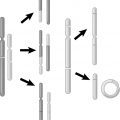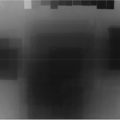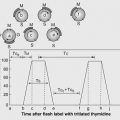4
RADIOSENSITIVITY AND THE DOSE-RATE EFFECT
BRIAN D. YARD AND MOHAMED E. ABAZEED
Question 1
What are the phases of the cell cycle?
Question 3
What molecules regulate the transitions from one phase of the cell cycle to the next? How would you characterize them?
Question 1 What are the phases of the cell cycle?
Answer 1
Proliferating mammalian cells have a cycle of DNA synthesis (S phase) followed by a pause or gap (G2), followed by mitosis (M phase), which is followed by another pause or gap (G1). If cells are not actively dividing, they are arrested in G.
Hall EJ, Giaccia AJ. Cell, tissue, and tumor kinetics. In: Hall EJ, Giaccia AJ, eds. Radiobiology for the Radiologist. 7th ed. Philadelphia, PA: Lippincott Williams & Wilkins; 2012:372–390.
Question 3 What molecules regulate the transitions from one phase of the cell cycle to the next? How would you characterize them?
Answer 3
The cell cycle is regulated by several cyclin-dependent kinases (Cdk), whose sequential activation preserves the temporal order of the cell cycle. Cdk enzymes are activated by cyclin and inactivated by Cdk inhibitory proteins. Cyclins and Cdk inhibitors are themselves regulated to ensure sequential and precise activation and deactivation.
Hall EJ, Giaccia AJ. Cell, tissue, and tumor kinetics. In: Hall EJ, Giaccia AJ, eds. Radiobiology for the Radiologist. 7th ed. Philadelphia, PA: Lippincott Williams & Wilkins; 2012:372–390.
Question 5
How does the dependence of radiosensitivity on cell cycle phase apply to an asynchronously dividing population?
Question 7
What is an example of an experimental manipulation that can modify potentially lethal damage (PLD)?
Question 5 How does the dependence of radiosensitivity on cell cycle phase apply to an asynchronously dividing population?
Answer 5
Cells replicating in culture are asynchronously dividing, that is, they are comprised of cells that are cycling independently of each other. The aforementioned experiments were conducted by various manipulations to “synchronize” these cells such that the population is cycling largely in sync. Virtually all tumors and normal tissue that is irradiated are comprised of asynchronously dividing populations. Therefore, unless the cells are arrested or timed such that they are in a particular phase of the cell cycle, either by chemical means or by “reassortment” (see the following), the dependence of radiosensitivity on cell cycle phases is not a major determinant of therapeutic radiosensitivity.
Hall EJ, Giaccia AJ. Cell, tissue, and tumor kinetics. In: Hall EJ, Giaccia AJ, eds. Radiobiology for the Radiologist. 7th ed. Philadelphia, PA: Lippincott Williams & Wilkins; 2012:372–390.
Stay updated, free articles. Join our Telegram channel

Full access? Get Clinical Tree






